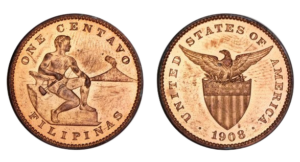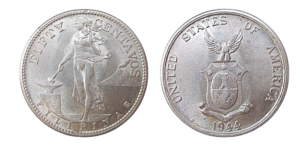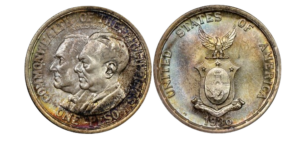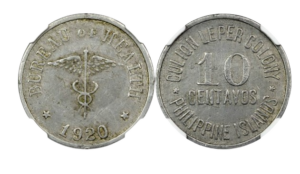5 Most Interesting Coins from the Manila Mint
Posted onYou may not be aware (many aren’t) that the United States Mint operated a mint in the Philippine Islands. In fact, the Manila Mint is the only U.S. branch mint that was located outside the continental United States! Today we’ll explore five of the most interesting coins from the historic and under the radar Manila Mint in the Philippine Islands.
A Little History
After the U.S. defeated Spain in the Spanish-American War in 1898, the Philippines became a U.S. territory. In 1920, the U.S. government reopened the Manila Mint, which had originally been built by the Spanish government in order to produce sorely needed currency to be used in the U.S. territory.
The Philippine economy was too weak to use the U.S. dollar, a much stronger currency. So the U.S. government created special lower denomination currency modeled after Spanish denominations just for the Philippine territory.
The Manila Mint produced coinage until 1922 and then again from 1925-1941, when the Japanese invasion of the Philippines during WWII halted U.S. operations there. Now, let’s take a look at five of the most interesting coins from the Manila Mint.
1. One Centavo Coin
2. Five Centavos Coin
3. Fifty Centavos Coins
4. One Peso Commemorative Coins
5. Leper Colony Coinage
One Centavo Coin

The lowest denomination coin produced by the Manila Mint was the one centavo. This coin featured a male Filipino with a hammer, sitting on an anvil. These coins were legal tender in both the U.S and the Philippines. Between July 1920 and December 1941 the Manila Mint produced a whopping 142,317,095 regular issue one centavo coins, more than all other denominations combined. This was widely used in everyday commerce and quickly helped to ease the coinage shortage there.
Five Centavos Coin

The five centavos coin continued the theme of the male Filipino worker. The 1920 and 1921 five centavos design featured a young Filipino male sitting next to an anvil. He holds a hammer in his right hand, his left arm raised, and in the background is a dramatic volcano spewing molten lava. The reverse design features an eagle with spread wings perched on top of an American shield.
The five centavos coins were produced with 75% silver and 25% copper. The silver content meant the coins intrinsic value was greater than their face value. Today, finding five centavos in good condition can be a challenge for collectors as many were melted down over the years. This coin was widely used in everyday transactions and was an essential part of the local currency system.
Fifty Centavos Coins

The fifty centavos issued under U.S. rule from the Manila Mint featured a distinctive and visually appealing design with a lovely female figure carrying a hammer that rested on an anvil. A billowing volcano is also seen in the background on this coin.
These coins were also struck from 75% silver and 25% copper. Today, the 1921 issue, with a mintage of 2,317,000, is easier to find, while the 1920 issue with a smaller mintage of 420,000 mintage is scarcer and typically more desired by astute collectors.
One Peso Commemorative Coins

In 1936, the Manila Mint produced two Commemorative Pesos. The first commemorative peso features the portraits of the first President of the Philippines, Manual L. Quezon, and U.S. President Franklin D. Roosevelt. The obverse of the other commemorative Peso features portraits of President Quezon and Frank Murphy, the last U.S. Governor General of the Philippines. The reverse for the 1936 commemoratives highlights the seal of the Commonwealth of the Philippines with United States of America placed above and the date centered below.
Leper Colony Coinage

The Manila Mint was also tasked with striking Leper Colony coinage for the Philippine Health Service. From 1920 through 1930, the Manila Mint produced five issues of Leper Colony coins.
These include the 1920 issue (ten centavos, twenty centavos and one peso) which carry no mint mark. The 1922 issue (twenty centavos and one peso) were stamped with the encircled initials “PM” (representing Philippine Mint). The 1925 (one peso) and 1927 (one centavo and five Centavos) issues show the Mint Marks “P” and “M” on the reverse to the right and left of the value. The 1930 issue (one centavo and ten centavos) show no mint marks.
The End of an Era
No U.S. coins were produced at the Manila Mint after 1941 during the Japanese occupation or until the Philippine independence occurred in 1946. Sadly, the Manila Mint were decimated by heavy bombing during the liberation of the islands. While these historic coins often fly under the radar, they remain important reminders of this unique U.S. Mint branch that briefly
produced coins outside the continental United States. These coins are also tangible legacy of the close ties and special relationship the United States and the people of the Philippines.
Want to read more? Subscribe to the Blanchard Newsletter and get our tales from the vault, our favorite stories from around the world and the latest tangible assets news delivered to your inbox weekly.







